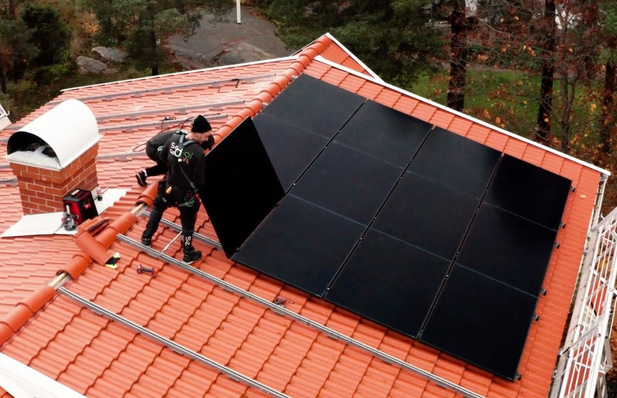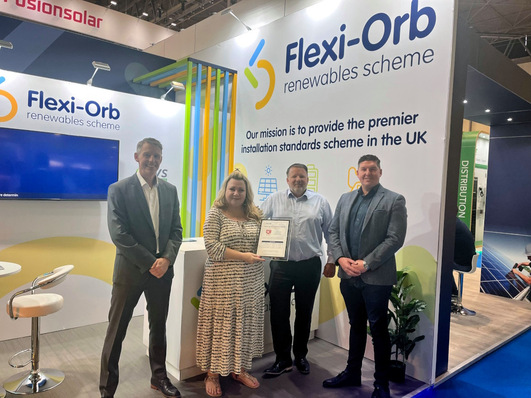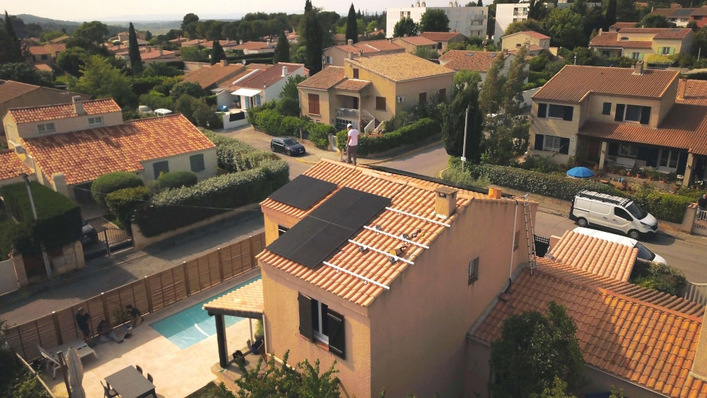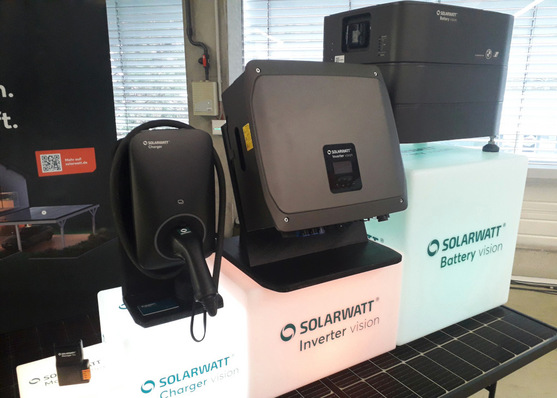Solar power is a good thing: inexpensive and long-lasting. In order to benefit from the advantages of this technology for as long as possible, it is important to keep certain points in mind, which are often underestimated. And then there are sad faces in case something happens: If only we had known about it before…
These are the 9 expert tips against lightning, hail and storms:
- Never without lightning protection!
- Sometimes lightning comes in through the cellar!
- Quick switch-off in case of fire!
- Also take solar batteries offline!
- Do not underestimate lightning and hail!
- Try to keep wildlife out!
- Get insurance for both storage units and solar generators!
- Prefer European components and equipment!
- Leave the installing to the experts!
1. Never without lightning protection!
A rooftop solar generator mostly consists of a metal frame that the solar panels are screwed onto. They usually have a frame made of aluminium with cables and plugs underneath them. That is why every rooftop solar generator needs lightning protection – even if there are high trees right next to it. External lightning protection (against direct lightning strikes from above) is not mandatory in private residences, but it should always be part of a professionally designed and installed solar installation. Most insurance companies also demand such protection using poles, surge protectors and ground rods. For a private residence, setting up lightning protection will cost you around 250 to 400 euros in addition to the actual solar generator. That should be worth it.
For public and commercial buildings, lightning protection on the roof is mandatory in any case. If you are installing a PV installation there, make sure it is adequately protected by your lightning protection. If not, you should upgrade it. Back to top.
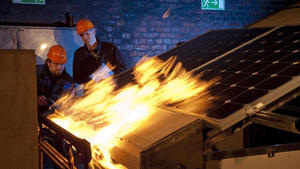
2.Sometimes lightning comes in through the cellar!
Even electricians(!) often underestimate the need for so-called internal lightning protection. It concerns the protection of the house from power surges coming in through the cellar. That can happen if there is a lightning strike in the vicinity of the house. This can cause a power surge to hit the main power line of the house and spread throughout the house’s wiring. This can affect all appliances in the house, including the inverter of the solar generator. So internal lightning protection should always be part of a private residence – even if there is no solar generator on the roof. Back to top.
3. Quick switch-off in case of fire!
So far there have been very few cases when solar generators have caused house fires, i.e. because of overheating components or short circuits. Germany has more than 1.5 million solar generators, and the number of house fires caused by them can be counted on the fingers of two hands. Nevertheless, the solar generator needs to be protected in case of fire in the house, because once the fire brigade arrives at a burning building, the first thing they do is take it off the power grid. That avoids water coming into contact with electrically conductive systems and harming fire fighters. If the sun is shining, the solar generator keeps producing electricity, even if the building has been taken off the grid and the inverter down in the cellar or in the maintenance room has switched off. For that reason, it is important that the solar installation also has a disconnect switch in case of fire. This should be well-marked right next to the main metre and also easily accessible. Even better are systems that switch off automatically. This can be done using special DC-to-DC converters. They sever the connection to the solar panel in case the inverter indicates a power failure. Back to top.
4. Also take solar batteries offline!
More and more private residences use solar battery systems for storing solar energy. Just like the solar installation, the battery also keeps pumping electricity into the house, regardless if the sun shines or not. Either the battery needs to have an emergency off-switch connected to the inverter, or fire fighters need to be able to switch it off in some other way to avoid harm to personnel from voltage and currents coming from the battery. Back to top.
5.Do not underestimate lightning and hail!
As a result of climate change, severe weather events are increasing in frequency in our latitudes. All analyses of insurance companies back this up, but common sense also agrees. Heavy thunderstorms in the summer increasingly involve lightning strikes and hail. In central Europe, the lightning strike density has been going up year to year, as can be seen from any lightning map. Hail can impact the glass of solar panels and do damage to the solar cells underneath it. Hail impacts can also occasionally cause damage that cannot be seen with the naked eye. Such microscopic cracks can often only be detected as part of electrical monitoring. If a geographical area has been affected by severe hailstorms, the technician responsible for maintenance should urgently conduct an on-site inspection. The sooner possible damage is detected, the better. Back to top.

6. Try to keep wildlife out!
Another reason to have an inspection at least once per year is to find out about possibly unwelcome visitors. Mice like to hide in cable ducts and chew the insulation off the coper wires. Birds build their nests in nooks and crannies under the solar panels. Martens also like to bring up their hide away their broods where they will not be disturbed – underneath the solar panels. There are areas, where pests like these are making quite a lot of trouble for operators of solar installations. If such cases get out of hand, you will need to secure the installations using wire mesh or more sturdy sheet metal. Back to top.
7. Get insurance for both storage units and solar generators!
It is essential to have your solar generator and storage unit insured. It usually is not covered by the regular building insurance. Some insurance companies are already well-versed in this area and offer so-called all-risk policies for solar generators. Based on their experience and expertise, some TÜV-certified installation companies can negotiate favourable conditions. In any case, insurance for an installation should always be factored into your profitability analysis, along with lightning and fire protection as well as regular maintenance and cleaning. Back to top.
8. Prefer European components and equipment!
When it comes to solar generators and their components (solar panels, wiring, inverters) as well as storage units (solar batteries), you should give a preference to European manufacturers. This does not mean that foreign companies are not capable of building such components properly, but EU suppliers usually have better service in case of complaints or damage. Sure, European products might be more expensive than the competition from the Far East. But buying cheap usually means buying twice. Back to top.
9. Leave the installing to the experts!
The installation of the components and equipment should under any circumstances be executed by trained technicians. These technicians and planners are familiar with meteorological and regional circumstances and often have already fitted similar systems and buildings.
Very important: You can tell a good installation company – apart from their references – by the fact that beyond implementation and lightning protection, they also offer to take care of maintenance right from the start. Also, they should issue the German Federal Solar Energy Association’s ‘facility passport’ (documentation) for the installation without having to be asked. (HS/HCN) Back to top.
More useful information about solar modules
Find useful products for solar generation here.




